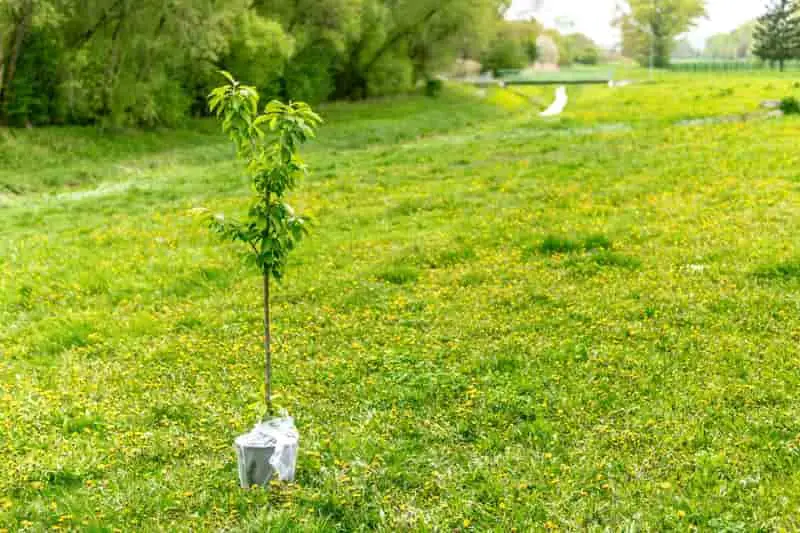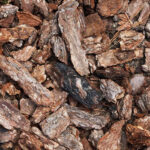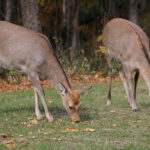
In order to plant trees on public land, the first issue to consider is whether or not you have permission to do so.
In this article, I’ll tell you how to contact the proper public land agency, find the regulations and convince them to say yes. And if that doesn’t work…I’ll tell you a few other ways you can get involved.
Table of Contents
- Can You Plant Trees On Public Land?
- How to Find & Contact the Proper Department
- How To Convince Them to Say Yes
- Others Ways To Plant Trees & Get Involved
- Final Thoughts
Can You Plant Trees On Public Land?
If you are interested in planting trees on public land, first find the specific department that is in charge of the land you are considering and give them a call. All public land agencies have a forestry department or arborist that can tell you the specific regulations. In many cases, you will have more success volunteering to an already established tree planting or ecosystem restoration project with public land managers.
The truth is, introducing tree species to a piece of land without permission can be disastrous for native ecosystems. Some species of trees may bear harmful fruit, others may harbor destructive insects such as Bark Beetles.
For that reason, It can be tricky trying to find out who you are supposed to contact in such a situation and get permission to plant trees.
But there is good news. Many public land agencies have volunteer departments and host events that encourage public participation in tree and forest management.
Keep reading to find a basic guide on how to find the proper department, as well as tips on how you can get involved.
How to Find & Contact the Proper Department
Public land, while it is technically “public”, is always going to be managed by someone. These departments have the ultimate say over what happens on these properties, and you must remain in communication with them if you are interested in adding to the local ecosystem.
Who Manages Public Land (And The Trees?)
First, be sure that you know exactly where it is that you are considering planting a tree and find the area’s name if possible. Once you have a specific location in mind, there are several ways to find the department that you need to contact.
- Federally owned property is usually very well marked and hard to miss. The National Park Service has a “Find a Park” service that allows you to search for parks by state and provides contact information for the park in question. The United States Forest Service also has a directory that lists every National Forest that falls under their management.
- It can be slightly more difficult to discern when a property is state land or owned by the local municipality, as it is not always clearly marked. To find state land, a simple Google search of “State land in (State)” will usually return either highly detailed maps or links to maps on state websites.
- The United States Geological Survey also has a highly detailed map of protected areas in the U.S. and their managers. However, it may be more difficult to see smaller areas that are not a part of larger properties.
- If the land in question does not appear to fall under any of these other categories, then it is most likely either private land or owned by the local municipality. In this circumstance, contact your local government to inquire as to whether or not they are in charge of the property.
Public Lands Managed By The US Department Of The Interior
- National Parks
- National Forests
- National Wildlife Refuges
- National Conservation Areas
- National Monuments
- Wilderness Areas
- National Historic Sites
- National Memorials
- National Battlefields
- National Recreation Areas
- Wild and Scenic Rivers
- National Seashores and National Lakeshores
- National Trails
The U.S. Department of the Interior manages approximately 75% of all federal public land. Most of the time, these properties are specially protected against extreme modification by humans.
Because of stricter guidelines, it may be more difficult, if not impossible, to get permission to plant trees here. While there is no harm in asking, don’t be too surprised if your proposal is rejected.
Public land that is managed by the United States Forest Service
The United States Forest Service is a branch of the United States Department of Agriculture. While this department covers a wide range of services, one of its chief concerns is forest conservation, ecosystem management, and biodiversity restoration.
This department manages the majority of the remaining ~25% of all federal public land that is not managed by the Department of the Interior.
See Also: Can You Build A Cabin On Public Land?
Public land that is managed by the State Government
Every state has a department that manages the public land owned by the state. These departments cover a wide variety of services, from laws pertaining to recreational and commercial use of public land to hunting and fishing regulations.
Public land that is managed by the local city/municipality
Public land in cities, towns and other municipalities is usually owned by the local government in question. This generally includes local parks, ponds, forests, and pathways.

How To Convince Them to Say Yes
Many times, so long as it isn’t a highly regulated area and you give them proper notice, the department in charge of the land will not be too opposed to you coming in and planting a few trees. However, there are a number of things that you should be familiar with in order to improve your chances of getting a “yes”.
- Know exactly what kind of trees you will be planting. Be sure that it is appropriate for the ecosystem of the area that you wish to work in.
- Be sure to know where you will be sourcing the trees from. In order to prevent any possible complications, such as the introduction of a potentially harmful invasive species, officials are going to want to know where these trees are coming from.
- Know exactly what the saplings are going to need. If they require intensive care, then be sure you are open and honest with what they are going to need, and be prepared to take on the responsibility of providing any applicable future care as they grow.
- Be able to explain why you have that specific property in mind. Is it near your home? Did it used to have more trees, but has undergone an extreme circumstance that has affected the local flora? Having this information handy shows that you care about the area, and only have its best interest in mind.
- Be open to change. If they reject your proposal, be ready to ask if there are any other areas that they would be willing to let you work with. Most likely, they will have something that they can offer you.
Others Ways To Plant Trees & Get Involved
If you are unable to secure permission from your local, state or federal land managers in your area, don’t worry.
The National Forest Foundation has a program open to anyone, and there are numerous ways you can help! (Check out the video below).
Final Thoughts
Kudos to you, for taking the time to search ‘can you plant trees on public land?’ You are on the right track.
Just be sure to keep in mind that by doing so without permission, or without the correct oversight…you could be doing more harm than good. Start by reaching out to your local public land agencies and get in touch with a professional forester or arborist.
And don’t be afraid to check with your local community resource center, chamber of commerce and nature center to ask about tree planting opportunities in your area. You may be surprised at how many other folks share your passion. Thank you for reading.





